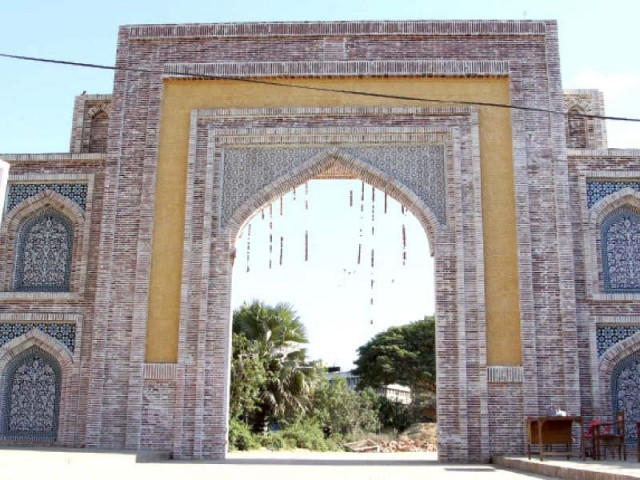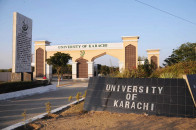Shah Jehan mosque started losing tiles in the 70s, claims khatib
Old tiles are now adorning houses of influential people, National museum gate

The engraved stones on the newly renovated gates of the National museum (above) originally belong to Shah Jehan’s mosque in Thatta. PHOTO: AYSHA SALEEM/EXPRESS
According to him, the theft of the rare stones of Thatta's historical monuments is on the rise. Many of these precious artefacts are now adorning the houses of influential people and very recently the gates of the newly renovated National Museum of Pakistan in Karachi.
9 most beautiful mosques in Pakistan
Apart from the Thatta mosque, engraved tiles have also been stolen from Makli graveyard, one of the largest graveyards in the world that has been declared as a World Heritage Site by Unesco. "Many stones from the the tomb of Mirza Essa Tur Khan, Mirza Tughural Baig, Mai Malki, Shaikh Hamad Jamali, Dolah Darya Khan have been taken out," said Prof Bari. "These stones are affixed in the bungalows of the influential. No one can question [them]."
Prof Bari's great grandfathers have also served as prayer leaders for Thatta's mosque, named after Mughal emperor Shah Jehan who built it in 1647. According to him, over 350 carved stones were taken apart in 1976 for preservation but they went missing. Over time, some of them were seen affixed outside houses in Thatta, and recently they were found on the main gate of National museum.
"These stones, inscribed with verses of the Holy Quran, were removed from the mosque because they were crumbling," he explained. "The then government of Zulfikar Ali Bhutto announced that they will be preserved and then fixed to their original spots. Instead of working on it, the government put these rare stones in the National museum. Now, they have fixed them on the gates of the museum in Karachi."
The culture department does not shy away from its actions. These stones were lying in garbage in front of the mosque in the 1970s and the department safely transported them to Karachi's National museum, said a department official, talking to the media on Tuesday.
Three Pakistani mosques make it to 'world's most beautiful mosques' list
Meanwhile, Sindh chief minister's adviser on culture Sharmila Farooqui, whose department looks after the National museum and Shah Jahan Mosque, was irked by Prof Bari's claims. "He [Prof Bari] is doing politics on this issue. He should not interfere in a government department's affairs," she said.
Speaking to The Express Tribune, Farooqui said that since the tiles are government property, it is their discretion where to place them. "These stones were rotting in the museum," she said. "We have preserved them and placed them on the National museum gate. What is wrong with it if we have used it for a good cause?"
She pointed out that replicas were placed in Thatta's mosque when these tiles were removed. "We have put rare items from Moen Jo Daro and other monuments at the National museum seemingly because the artefacts were not safe over there," she said.
Published in The Express Tribune, January 23rd, 2016.








1733130350-0/Untitled-design-(76)1733130350-0-208x130.webp)









COMMENTS
Comments are moderated and generally will be posted if they are on-topic and not abusive.
For more information, please see our Comments FAQ